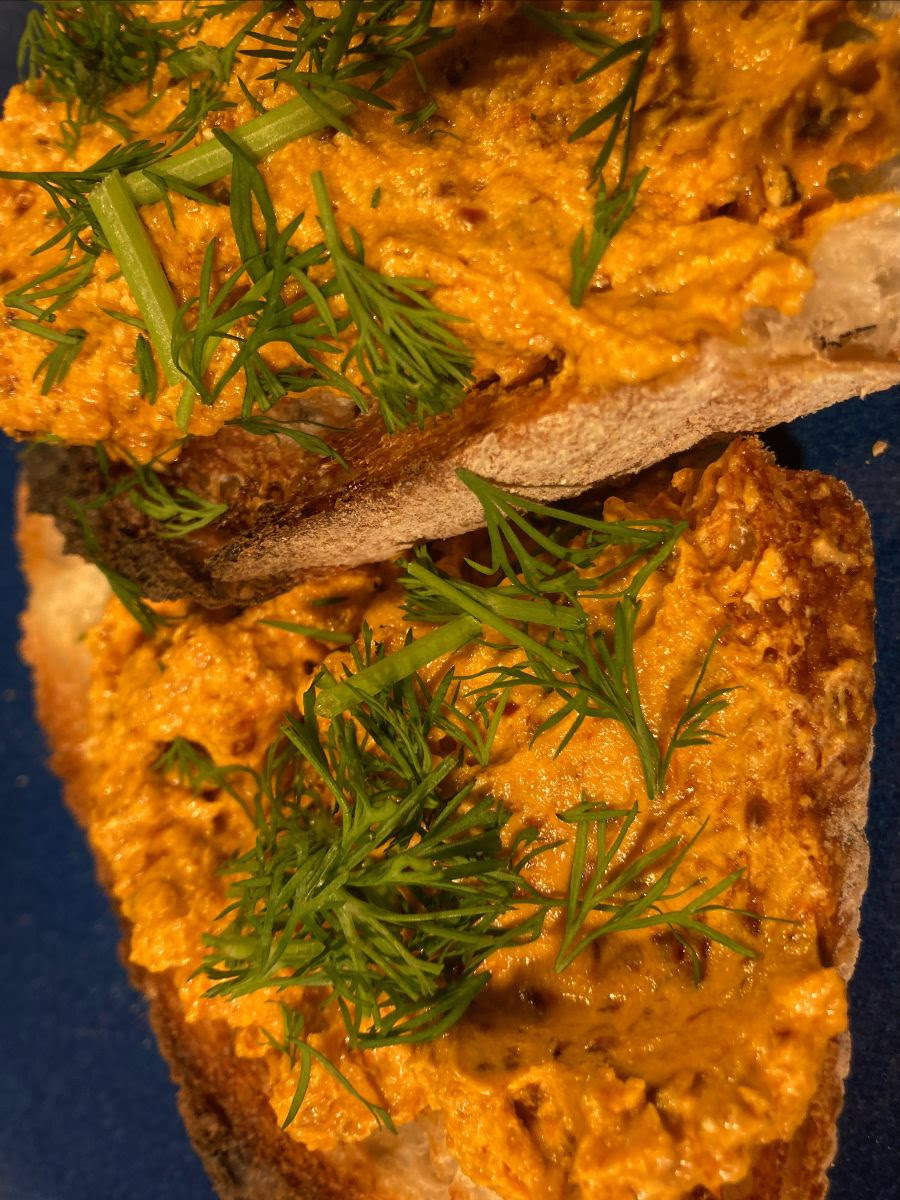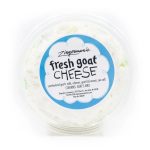Excerpt from Ari’s Top 5 enews
Handmade Tunisian Harissa combined with handcrafted Creamery Cream Cheese
Fifteen years or so ago, we did a T-shirt at the Roadhouse to promote our then-new Pimento Cheese. In a bit of one-line visioning, we wrote “Pimento Cheese Capital of the Midwest.” (The T-shirt is a Zingerman’s classic and one of my favorites, and as of last month, you can buy one!) At the time, we were just getting going with Pimento Cheese and hardly anyone in Ann Arbor even knew what it was. Today it’s one of our top-selling items at the Roadhouse and Deli. Mail Order ships it regularly, and the Creamery wholesales it to retailers and restaurants all over the country.
Given that there are many thousands of pimento cheese recipes in the U.S., I started to think about other cultures that have created similar spreads that combine cheese and chiles. They don’t call them “pimento cheese,” but they could. Our long-standing love for Liptauer at the Creamery, I realized, was actually an affinity for what we could well be calling “Hungarian Pimento Cheese.” What follows is a “recipe” for a pimento cheese we aren’t yet selling, but I’m pretty sure we probably ought to be. In the meantime, you can make it at home in a matter of minutes, as I did the other day. It’s incredibly easy to make something so delicious that you might well find yourself, as I have, making it over and over again.
The “Tunisian Pimento Cheese” calls for two world-class ingredients, products that are so special that the choice of brand to be used will, to be clear, make a BIG difference. Each is exceptional. First up is the handmade Cream Cheese from Zingerman’s Creamery. Using milk from the herd of the good folks at Calder Dairy in Carleton, it’s made simply with rennet (to separate solid curd from liquid whey), a bit of added cream, and sea salt. I had some again the other day for the first time in a few months and was reminded anew just how amazingly excellent it is. Creamy, full-flavored, mouth-filling, and a really fine long finish.
The other ingredient is the traditional Harissa from the Mahjoub family in Tunisia. It’s a family recipe that goes back for generations. Majid Mahjoub shares, “From a very young age, my parents taught me that this recipe comes from very far away. We, the children, learned a lot, but I believe that our parents learned even more, from theirs.” Other than the spices, all of the ingredients in the harissa are grown, organically and sustainably, on the Mahjoub family farm. Three different peppers, all carefully hand seeded and sun-dried; tomatoes handled similarly (the sun-drying makes a big difference); extra virgin olive oil (the one Tammie and I cook with daily at home); with a small bit of garlic, coriander, caraway seed, and some sea salt.
If there is one star of this savory confection, it would probably be the Baklouti pepper. While all chile peppers arrived in Africa only after Columbus’ first encounter with the Americas, over the last few hundred years the Baklouti has become as integral to Tunisian cooking as the Piquillo to the Spanish Basque Country or Paprika to Hungary. It’s named for the town of Bekalta, on the country’s east coast, which, since it’s a port city could well be the place the pepper first made its presence known on Tunisian shores. Large red tapering pods, hot but not mind-blowingly so, and appropriately very flavorful.
The creamy mildness of the cream cheese is an ideal foil for the spicy complexity of the harissa. Making the spread is about as simple as it gets. I like a ratio of about two parts cream cheese to one part harissa, but you can vary that up or down depending on how intense and how spicy you like your food. Thin with a small bit of extra virgin olive oil. Garnish if you like with some chopped fresh herbs—dill, mint, basil … any or all would be good. Eat and enjoy!
Because both of these products—the Creamery’s Cream Cheese and the Mahjoub’s Harissa—are made very much as they would have been a hundred years ago, what you and I will taste when we try this is much the same as we would have experienced back in 1896 when the Mahjoub family first started to sell the public what they had long been making and eating at home. It’s great as is on crackers. Beautiful on a baked potato. Lovely stuffed under the skin of roasted chicken. Super tasty on a sandwich and it makes a great grilled cheese. You can even use it to toss with pasta. This “Tunisian Pimento Cheese” is spicy, creamy, and, like the original Pimento Cheese, pretty much darned good on everything! It’s also, I’ll warn you, addictive!



